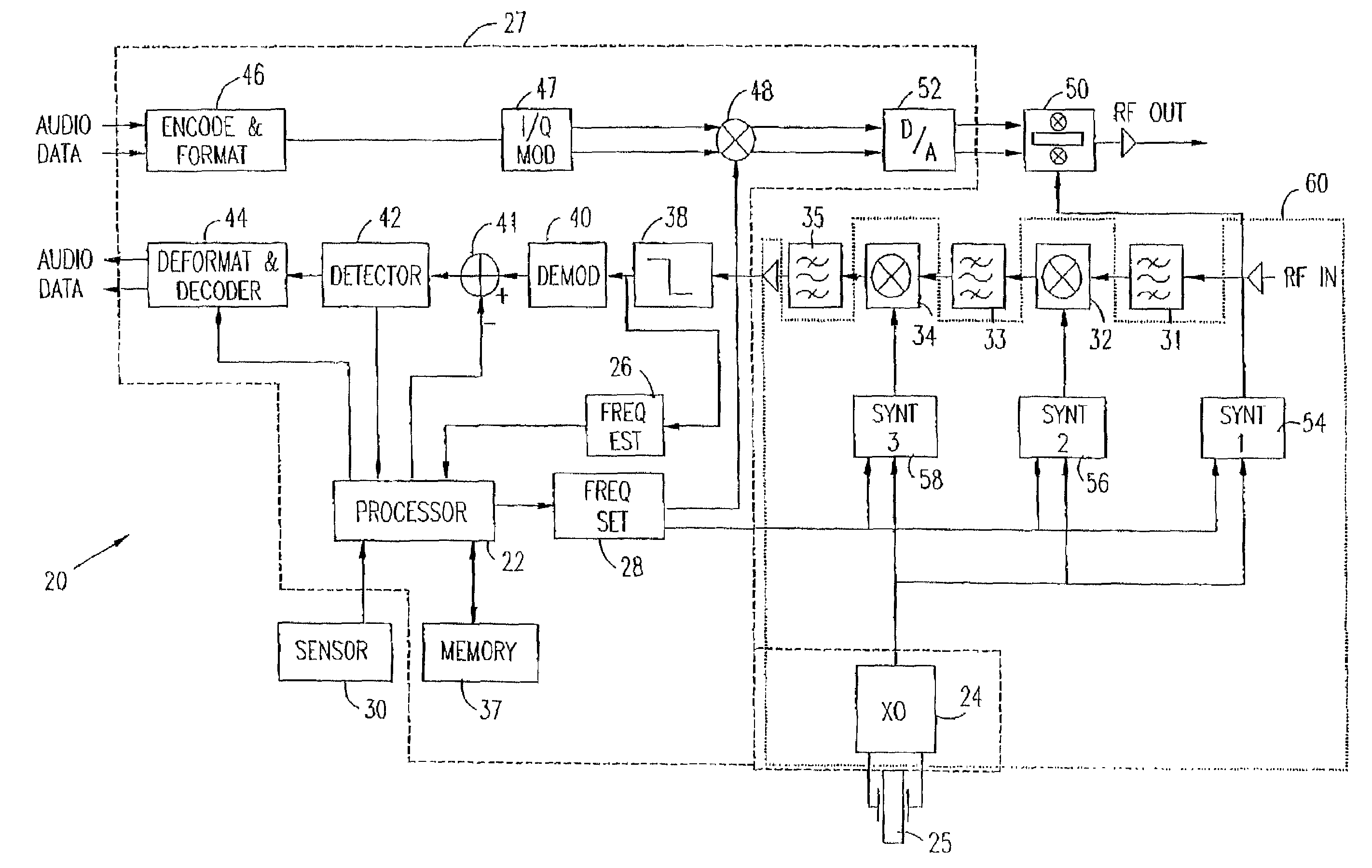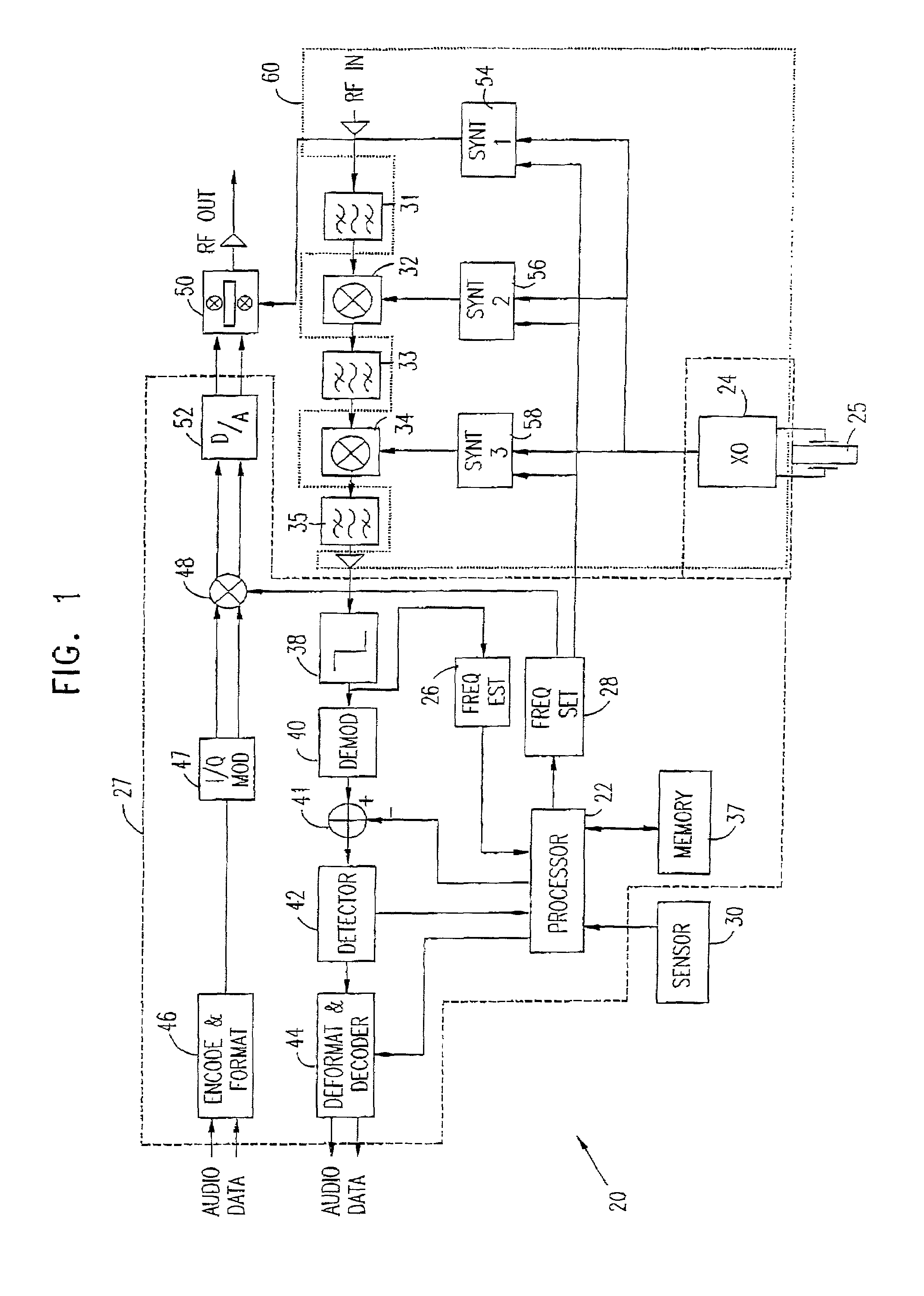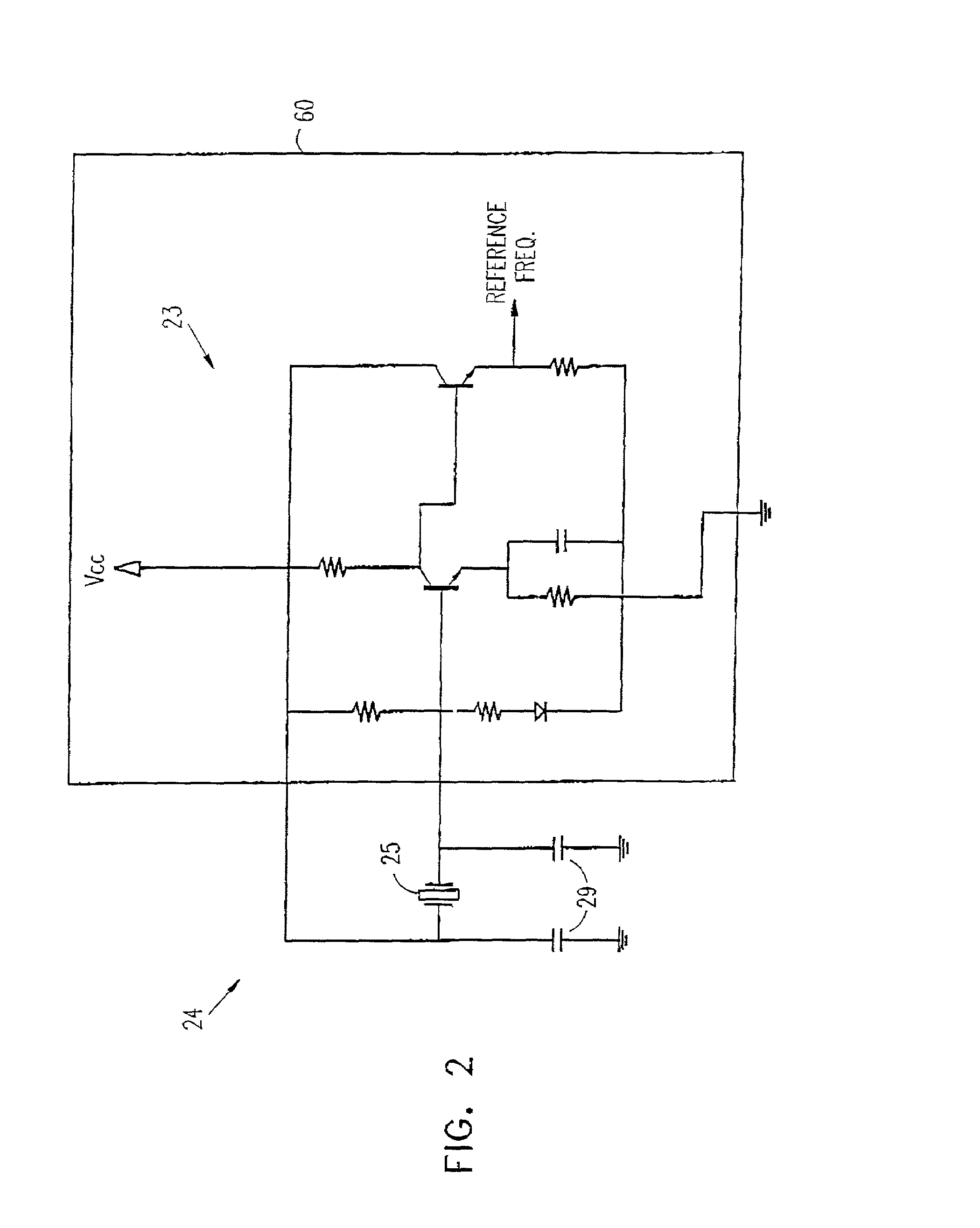Frequency tuning of radio transceivers
a radio transceiver and frequency tuning technology, applied in automatic frequency control details, resonance circuit tuning, electrical equipment, etc., can solve the problem of relative frequency error of clock signals, and achieve the effect of accurate tuning of radio transceivers
- Summary
- Abstract
- Description
- Claims
- Application Information
AI Technical Summary
Benefits of technology
Problems solved by technology
Method used
Image
Examples
Embodiment Construction
[0062]Reference is now made to FIG. 1, which is a schematic block diagram showing elements of a radio transceiver 20, in accordance with a preferred embodiment of the present invention. Transceiver 20 is of a type commonly used in PDC-standard cellular telephones, and is preferably implemented in the form of one or more custom integrated circuit devices, including all or most of the functions of the blocks shown in FIG. 1. 1t will be appreciated, however, that the principles of the present invention may similarly be applied to transceivers for use in accordance with other cellular communications standards, as well as transmitters, receivers and transceivers of other types.
[0063]Transceiver 20 preferably comprises a processor 22, which receives data from various elements of the transceiver and controls various transceiver functions. The processor preferably comprises a digital signal processor or microprocessor core, of any suitable type known in the art. For clarity and simplicity o...
PUM
 Login to View More
Login to View More Abstract
Description
Claims
Application Information
 Login to View More
Login to View More - R&D
- Intellectual Property
- Life Sciences
- Materials
- Tech Scout
- Unparalleled Data Quality
- Higher Quality Content
- 60% Fewer Hallucinations
Browse by: Latest US Patents, China's latest patents, Technical Efficacy Thesaurus, Application Domain, Technology Topic, Popular Technical Reports.
© 2025 PatSnap. All rights reserved.Legal|Privacy policy|Modern Slavery Act Transparency Statement|Sitemap|About US| Contact US: help@patsnap.com



